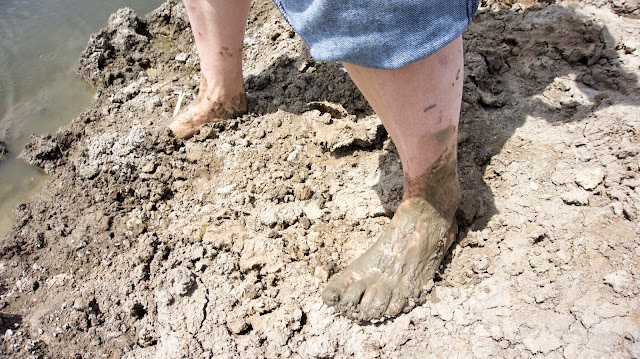(originally published in the Montana Sporting Journal)
If you can handle the steady gnawing of 40-mph Paradise Valley wind in January, you'll be fine. Just bundle up and know that there are warming huts. The fishing should be good.
Paradise Valley's famed spring creeks (Depuy, Armstrong aka O'Hair's and Nelson) are on most angler's to-fish list, but so much dogma is associated with them that it can be hard to convince yourself to challenge them. Protocol, etiquette, snobby fish, the rod fee... But still, it sounds like fun, right?
One way to get around most of that is to visit them in the winter. Few anglers and $40-per-rod fee alleviate some of the issues. As for the snobby fish? Crash that tea party with streamers.
You won't get dirty looks like you might at some high-society fisheries like Harriman State Park in Idaho. While the Paradise Valley spring creeks are classy, they're also have a working-class feel.
Anglers usually need nothing more than a well-proportioned black Woolly Bugger. JJ Special, Home Invader, or Clouser – any streamer in moderate size and good presentation should move fish throughout winter.
And you can play the dry-fly game. My friends have a tradition of “fishing off the hangover” on January 1st at Depuy Spring Creek, and someone is usually able to net a fish hooked on the surface.
Of course eggs usually work, but if you'd pay $40 to fish eggs, you should probably just put that money towards an auger and an ice house.
It almost certainly will be wind-chilly. Constant 50-mile-per-hour winds happen, and a steady 20-mph breeze is standard. Sometimes the creeks are protected from that, but usually not.
The rates are low from October 15 until April 15. Crowds are strongest on the shoulders – there's not much pressure in January. Depuy offers a winter pass for $400 that allows (more or-less) unlimited visits if you're genuinely interested, but you'd have to live nearby.
The three Paradise Valley creeks are similar but distinct. All are open year round, all have high numbers of browns, rainbows and cutthroat, and all have had some degree of riparian enhancement. All are working cattle ranches and all are owned or run by typical Montana-warm ranch families. To sign in and settle up, they welcome strangers into their homes - the O'Hairs are often in the midst of a family breakfast, and are always gracious hosts.
Spawning fish will run all the way up Armstrong, and nothing impedes them at Nelson's. The runs occur on a slightly different schedule than most Montana rivers since water temps are constant.
Depuy has a little fly shop that runs odd winter hours, and Nelson's recently opened a fly shop and has ponds for an additional fee (seasonally).
As we go about our tradition of fishing New Year's Day, I am reminded of past outings.
 One March day, a friend and I signed in to Armstrong's when a grass fire erupted near the barns. We went to help load buckets with water, but they wouldn't have it. We'd paid our money, they could handle the flames. God bless 'em.
One March day, a friend and I signed in to Armstrong's when a grass fire erupted near the barns. We went to help load buckets with water, but they wouldn't have it. We'd paid our money, they could handle the flames. God bless 'em.Another time, I inadvertently fished some out-of-bounds water at Nelson's (if you're reading this Mr. Nelson, lots of literary license here). It was our first time there, early in the morning, and I was plumb dumb. In my defense, the hatchery ponds kind of look like a creek, are unmarked and are the first things you see upon wadering up. Hundreds of trout, literally writhing amongst each other. I thought we'd cracked the code – just have to get there early. I threw in my CDC bubble-back baetis emerger and several trout immediately charged at it, almost as if they expected a pellet. I hooked a fat, 18-inch, blackish rainbow, and was proud to find the challenging spring creeks second-nature to this apparent old pro. I even have a grip-n-grin to prove it. As we gained lucidity that morning, we shifted our efforts slightly south to the actual creek with a brief look and slight nod. I will take that story with me to my grave...wait...
No matter which creek you fish or what day you choose, bring nymphs, dries, and definitely streamers. Knee-deep in winter, there might be no better warm-up than a day full of energetic trout.


















































